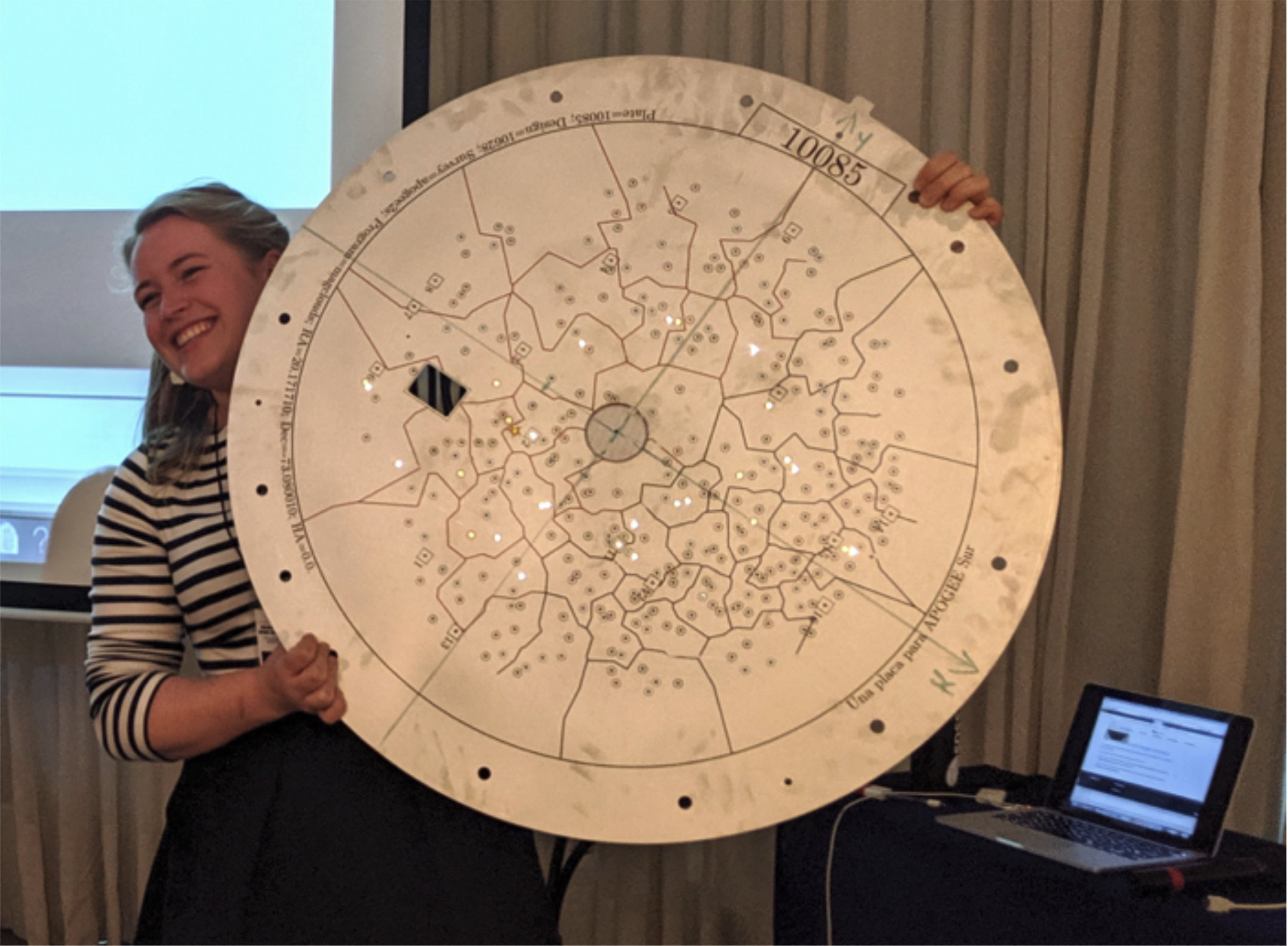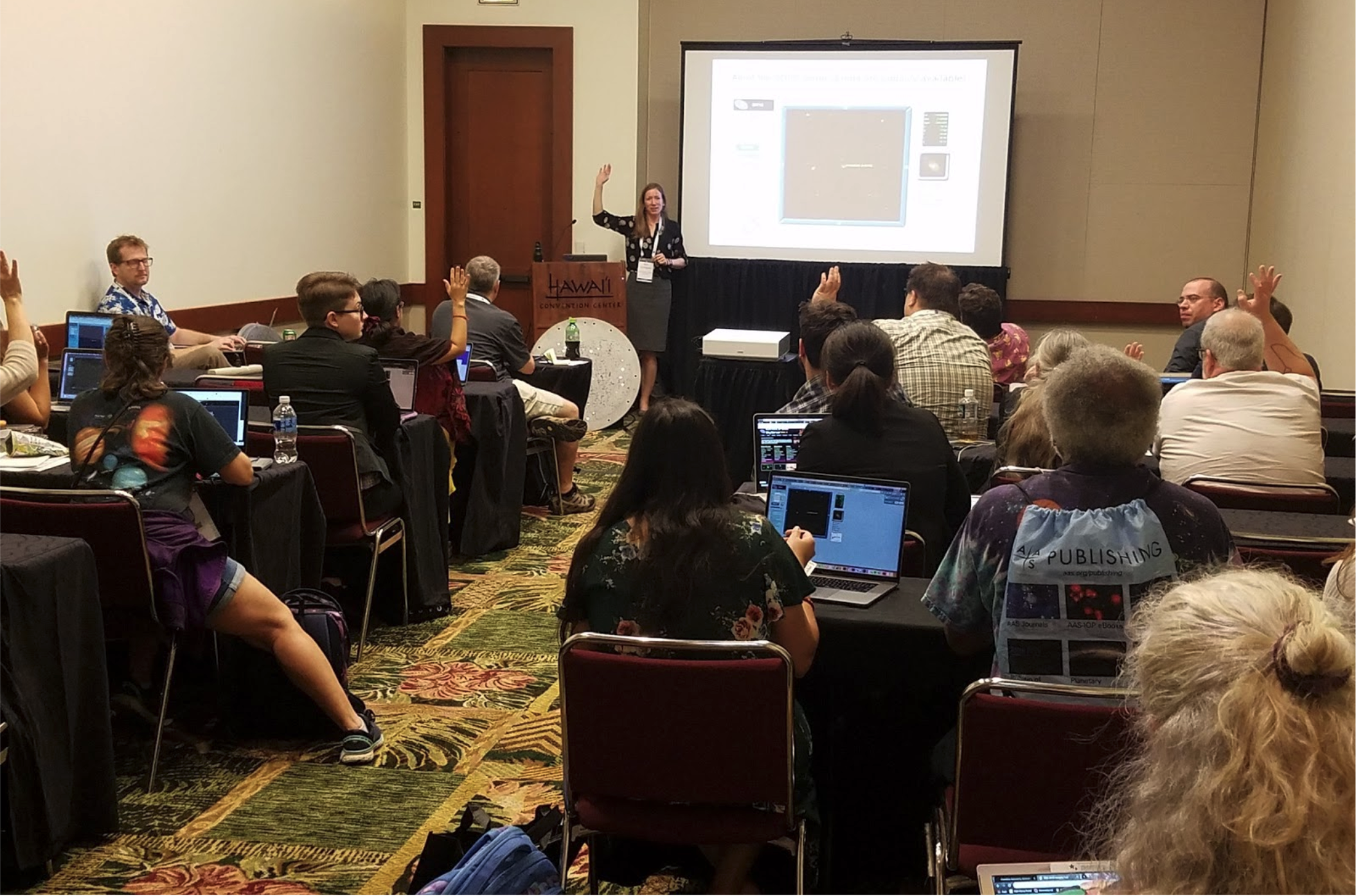SDSS Resources for Infusing Astronomy Education with Computing and Big Data
Britt Lundgren University of North Carolina, Asheville
 Increasing Access to Critical Skill Building in Astronomy
Increasing Access to Critical Skill Building in Astronomy
Astronomy has always been a “big data” science, and instrumental and computational advances over the past two decades have made terabyte-scale datasets the norm. With even more expansive surveys on the horizon, astronomy will increasingly rely upon individuals who are equipped with the skills to visualize and analyze large and complex datasets. In recognition of these trends, a growing number of groups have been developing curricular activities that incorporate authentic astronomy data and are designed to build students’ computational literacy.
While we work as a community to modernize our educational pathways and better prepare today’s students for the field’s future technical challenges, it is important to also ensure that there is equitable access to the data and computing resources that are required to build necessary skills. The US Department of Education’s STEM 2026 report highlighted the importance of ensuring that underserved populations and institutions with marginal access to computing resources are not left behind. The 2015 Inclusive Astronomy Nashville Recommendations also called for the astronomical community to make “data, software, and publications open access,” to “provide access to supercomputing resources,” and to “expand access to astronomical educational materials that are freely available and of high quality.”
Accessible Data Explorations Using the Sloan Digital Sky Survey
For nearly two decades the Sloan Digital Sky Survey (SDSS) has made professional astronomical data freely available to the world. Its immense archival imaging and spectroscopic datasets, coupled with multiple access points and interfaces, were deliberately designed to enable audiences from a wide range of backgrounds to explore and engage with the data while cultivating interests and proficiency in astronomy. The long-standing SDSS Education and Public Outreach (EPO) working group is charged with advancing education and public outreach in astronomy through SDSS-related activities and, increasingly, the direct engagement of the public with SDSS data.
SDSS Voyages, the collaboration’s primary educational portal, provides freely accessible inquiry-based activities built on the same data used by professional astronomers. These activities have been used by thousands of students learning science, technology, engineering, and math (STEM) subjects, from elementary through graduate schools, and through after-school and informal education programs. SDSS data have increased understanding of science among the general public as well, by enabling citizen science projects like Galaxy Zoo and appearing in museum exhibits worldwide.

Since 2016, the SDSS EPO working group has also partnered with the developers of SciServer.org to produce innovative and accessible Python-based data explorations for undergraduate astronomy classrooms and labs. Operated by the Institute for Data Intensive Engineering and Science at Johns Hopkins University, SciServer enables a new approach that allows students and researchers to work with terabytes or petabytes of scientific data in the cloud via web-based notebooks, without the need to download any large datasets or to install any software.
Using this framework, the SDSS EPO team has developed a set of free, highly accessible, inquiry-based activities using SDSS data for a broad community of astronomy educators. A set of introductory-level activities for non-majors has been piloted at the University of St Andrews, UK, and a complementary curriculum for upper-level astronomy undergraduates has been introduced at the University of North Carolina at Asheville. Together, these SciServer explorations empower students to quickly query the millions of stars, galaxies, and quasars observed by the SDSS and visualize the data with ease. Completing the activities equips students with an essential foundation in coding and data literacy that empowers them to pursue a wider range of independent research projects in astronomy.

These activities were presented and made fully available to participants at a half-day workshop funded by the AAS-EPD Mini-Grant program at the 2020 AAS winter meeting in Honolulu, Hawai‘i. In a follow-up survey, 83% of the workshop attendees indicated that they planned to use SDSS SciServer activities in their high school or university classrooms. By sharing this curriculum in a workshop for the broader AAS community, the SDSS EPO team hopes to create a community of practice of early-adopters of these new resources, who can share their feedback and curriculum modifications, and in doing so, further improve the computational literacy and scientific appreciation of the next generation of astronomy students.
More information about the SDSS EPO activities and educational resources can be found on our website and a recent publication. You can also find a recorded talk on the benefits of using SDSS data in STEM education and a 90-minute workshop demonstrating more of the SDSS’ available educational resources on YouTube.
Acknowledgments
The SDSS-IV EPO working group is co-chaired by Britt Lundgren (University of North Carolina Asheville) and Rita Tojeiro (University of St Andrews, Scotland, UK). Funding for the Sloan Digital Sky Survey IV has been provided by the Alfred P. Sloan Foundation, the US Department of Energy Office of Science, and the Participating Institutions. SDSS acknowledges support and resources from the Center for High-Performance Computing at the University of Utah. The SDSS website is www.sdss.org.
The SDSS is managed by the Astrophysical Research Consortium for the Participating Institutions of the SDSS Collaboration including the Brazilian Participation Group, the Carnegie Institution for Science, Carnegie Mellon University, Center for Astrophysics | Harvard & Smithsonian (CfA), the Chilean Participation Group, the French Participation Group, Instituto de Astrofísica de Canarias, The Johns Hopkins University, Kavli Institute for the Physics and Mathematics of the Universe (IPMU) / University of Tokyo, the Korean Participation Group, Lawrence Berkeley National Laboratory, Leibniz Institut für Astrophysik Potsdam (AIP), Max-Planck-Institut für Astronomie (MPIA Heidelberg), Max-Planck-Institut für Astrophysik (MPA Garching), Max-Planck-Institut für Extraterrestrische Physik (MPE), National Astronomical Observatories of China, New Mexico State University, New York University, University of Notre Dame, Observatório Nacional / MCTI, The Ohio State University, Pennsylvania State University, Shanghai Astronomical Observatory, United Kingdom Participation Group, Universidad Nacional Autónoma de México, University of Arizona, University of Colorado Boulder, University of Oxford, University of Portsmouth, University of Utah, University of Virginia, University of Washington, University of Wisconsin, Vanderbilt University, and Yale University.

